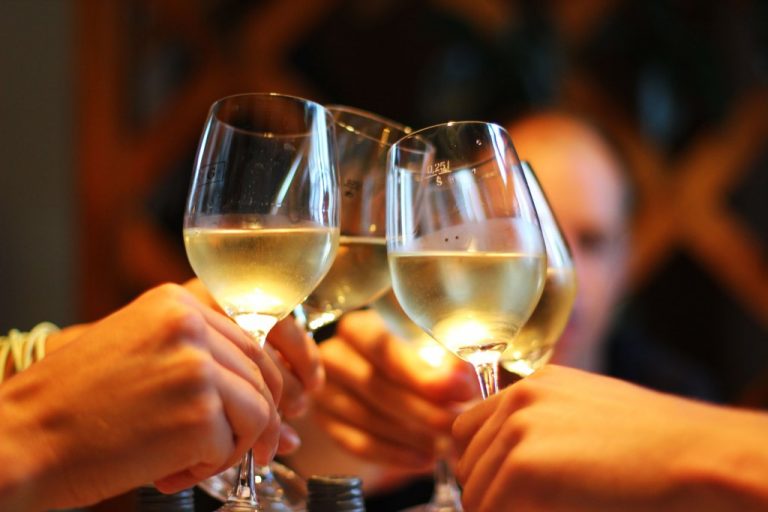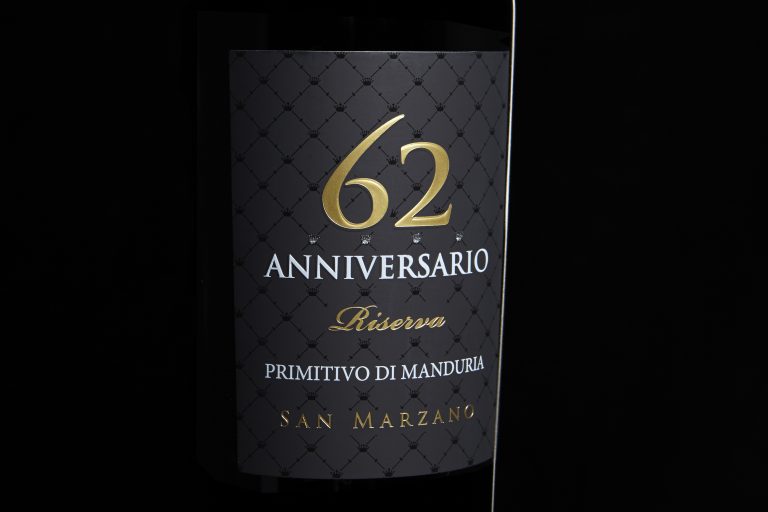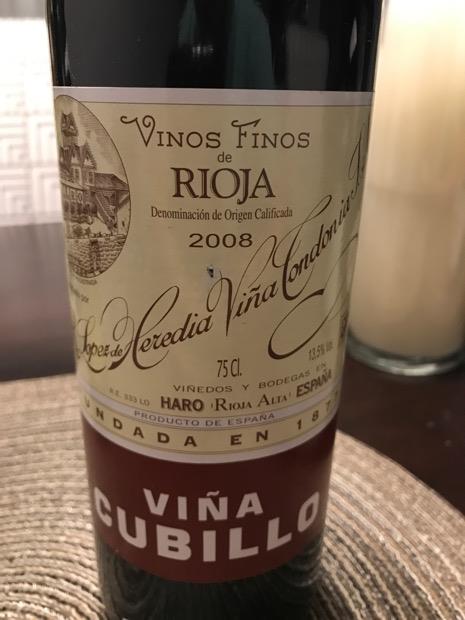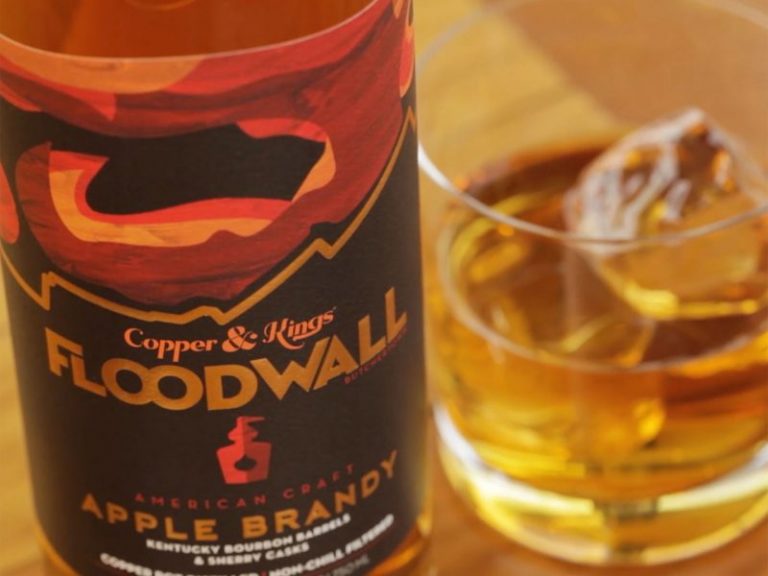Multicultural Wines For Thanksgiving
To honor the people who collectively make America their home, the American Thanksgiving holiday should be one that fetes cultural diversity. While I can always get behind anything that celebrates different cultures coming together, admittedly, I have been somewhat narrow minded when it comes to the diversity of wines served for the holiday meal. I have historically insisted that all wine for the meal must come from the United States! Sheesh. No idea what I was thinking there. Sure, American wine is produced by people of every international background, with influences that inform all levels of winemaking, and comes in all colors and styles. However, I feel now that isn’t enough to justify such a silly rule. All are welcome at my Thanksgiving table. Growing up, they always have been. Therefore, the same hospitality should extend to the wine too.
There are all sorts of Thanksgiving wine guides out there that will pick apart every ingredient of the meal from the hors d’oeuvres to the soup course to the main meal and dessert to clinically match them. People obsess over these things. Let’s be honest here, there is going to be exactly NO ONE at your table who is going to freak out if the finish of a freakin’ chardonnay is too appley to pair with string beans. (Seriously, if they do, don’t invite that person over again.) There are better ways to handle this.
Come on in!
Let’s get this party started. Nothing is more welcoming than a pop! of bubbly. At this stage, it’s best to either make a fizzy punch that everyone can help themselves to after the first glasses are served (this way the hosts can busy themselves again in the kitchen and figure out a plan B for that weird online stuffing recipe that sounded better in theory), or open a festive bottle. Some to try:
Veuve Ambal Rosé: This Burgundian winery has been in operation since 1898. The pink version of their Crémant de Bourgogne, made with gently pressed pinot noir and chardonnay, gives off fresh berry flavors with a toasty finish that matches with spreads, puffs and cheeses, and it's a stylish, more affordable sub for Champagne. You can impress your guests by telling them it won gold in the 2017 New York International Wine Competition. $16
Mionetto Luxury Collection Dry NV Cartizze Superiore DOCG: I recently served this to people who swore they didn’t like Prosecco because they thought they were too cloying and cheap-tasting. Clearly they just hadn’t met the right one. Always look for DOCG on bottle of a Prosecco and you almost can’t go wrong, as the grapes are grown in the best vineyard sites and made in the Charmat method, producing a more balanced and nuanced style. So what did my Prosecco naysayer friends think? Let’s just say that bottle, with its tiny bubbles, bursts of lemon zest and inviting aromatics went pretty quickly, so you might need more than one. $35
Chapel Down NV: Fun game - serve this 2017 NYISC silver medal-winning sparkler to friends, but don’t tell them what it is till they’ve tasted it. Now tell them it’s made in Kent, England. Repeat yourself because they will say, “Whaaaaaat???” And then you say, “Isn’t it awesome? It’s made by a cool fermentation method and matured on the lees for 6 months, then spends 9 - 24 months aging in bottle, just like Champagne. And yes, you are definitely tasting some pretty flavors or lemongrass, red and green apples, and what tastes a little like fresh strawberries with scones.” $35
First Course
In my family we always serve either chestnut or butternut squash soup before the main meal. In other homes, I’ve heard of starting out with everything from a winter squash salad to shrimp shumai to ceviche to empanadas or samosas and beyond. I like to pair this part of the feast with a medium to full bodied white wine with some fruity aromatics, but stay away from anything too bone dry, herbal and acidic (sorry, sauvignon blanc. Next time). Good varieties and styles to uncork are Rhone celebrities like viognier and grenache blanc (and if anyone at your table says Rhone grapes should only come from the Rhone Valley, don’t invite that person over again), but these dishes can also take an aromatic Alsatian such as gewurztraminer, dry riesling or pinot blanc (or combination thereof), a tangy Greek wine made from regional varietals, a fruity Italian grillo from Sicily or Arneis from the North, a Portuguese white blend, or a not-too-oaky or buttery chardonnay. Any of these choices would satisfy an all-vegetarian meal too. A few to try:
2015 Esporão Reserva White: this regional blend of arinto, roupeiro, antão vaz and semillon from the Alentejo region of Portugal is aged on the lees for six months to achieve a satisfying, creamy quality and depth of fruit flavor with twinkles of floral aromatics. The regional grape blend comes together in such a way that it tastes far more expensive than it is. $20
2016 Hosmer Dry Riesling: Here's a gorgeous (2017 NYISC gold medal) Finger Lakes, NY wine that will make everyone at the table thankful for its warming pear and golden apple flavors. There’s a hint of orange blossom that’s nicely tamed by a crisp, acidic finish that keeps it from being either too fruity or perfumey. $17
2014 Tablas Creek Vineyard Esprit de Tablas Blanc: This Rhone-esque blend of rousanne, grenache blanc and picpoul blanc is a bit of a splurge at $45, but so worth it. Tablas Creek is a Paso Robles winery founded between the Perrin family of Château de Beaucastel in Rhone and the importer Robert Hass. Though it drips with ripe stone fruit flavors, there’s this ribbon of saltiness keeping it in check, and I love the aroma of gardenias and orange zest it leaves in the glass. While I’d personally serve this at the beginning of the meal, it’s rich enough that it could also pair with the main course whether it be turkey or ham. It would also be delicious with some fois grois and creamy cheeses.
2016 Domaine Papagiannakos Savatiano Old Vines: This is the lightest and driest style I’ll recommend here for the whites. It’s made from 100% Savatiano grapes grown from vines over 50 years old under hot and dry conditions in Attica, the growing areas surrounding Athens. There’s a zing of fresh apricot and lime with a hint of white flowers. It would be delicious with a salad course as well as many of those vegetable side dishes like roasted brussel sprouts and string bean casserole. $17
2014 Dopff & Irion Cuvée René Dopff Gewurztraminer: Gewurztraminer is a tricky grape since there is such a fine line between the gloriously luscious - with scents of rose petal and jasmine - or the sensation of licking the bottom of a suitcase after a bottle of duty free Chanel No. 5 shattered in it. Luckily, this one from the heart of Alsace is the former variety, with rich, lip-smacking layers of mango, pineapple and citrus. The perfuminess is but a subtle misting of fresh cut flowers and it ends with a wash of fresh acidity. $20
Main Course
When it’s time for the main event, it’s almost like having a second dinner, so you don’t want a wine that's too alcoholic or heavy here. For a real world selection that isn’t from my dad’s cellar (can’t wait to see what we open this year), many of the pairing experts suggest California zinfandel because the combination of fruit and spice flavors match so well with the food, and they do. However, these wines tend to be among the highest ABV available to be legally labeled as table wine - sometimes upwards of 16% (and that’s only what’s on the label, it can be higher than what is stated). They can be delicious, but save them for another occasion, like a roast chicken dinner or winter stew. I would instead suggest a Primitivo from Italy, which is so similar in DNA to zinfandel that many believe it to be the same grape, but with lower alcohol and sugar levels since the growing conditions are cooler.
Otherwise, a rustic cab franc provides just enough fruit and earthiness to take both the meat and side dishes, as does sangiovese or tempranillo. I also love a syrah/grenache blend (hence why a festive Chateuneuf du Pape is ideal here) with this meal for their jammy-juiciness and rich, earthy-spicy tones. Want to keep things even lighter? You absolutely can’t go wrong with a lighter style of pinot noir like a red Burgundy, or a cool climate style such as one from the Russian River Valley. Other terrific options are gamay-driven Beaujolais that isn’t Nouveau (most of those are just too light-bodied, sugary and bubble-gummy to hold up to the savory notes in the dishes) or a Blaufrankisch from Germany. Some suggestions:
2013 San Marzano Anniversario 62 Primitivo di Manduria D.O.P. Reserva: at 14.5% ABV, this primitivo provides all the velvety dark fruit, coffee earthiness and subtle spice of a zin, but without all that clobbery, alcoholic sugar. The name celebrates the year the year the winery cooperative in Puglia, Italy was launched. I also recommend keeping a bottle for a snow day to accompany a winter stew, pot roast or baked ziti. $34
2015 Domaine de la Bastide Rouge Côte de Rhône AOP: Chateauneuf is too spendy? This affordable, little black dress of a wine is an elegant substitute. Though it is a relatively new winery, founded in 1989, it is on a site with a long history of winemaking with a Benedictine, then a Dominican monastery on the property. Carignan lends some savory herbal tones to the jammy and peppery blend of grenache and syrah that will match the sage and rosemary flavors of the meat and side dishes, not mention the cranberry sauce! $16
2010 Eliana Reserve, Rogue Valley, Oregon: This delightful cab franc blend from Oregon is a perfect alternative for those who prefer a richer style of red. Blueberries and dried cherries meet chocolate covered espresso beans and a pretty violet finish. It’s won tons of awards, including gold in the 2017 NYISC, but it is surprisingly affordable at $28.
2013 Joseph Drouhin, Côte de Beaune Villages: Burgundy table wine doesn’t get much more classic and approachable than this. Ripe pinot noir brings plush notes of dark cherry, plum and blackberry, backed up by balanced tannins of black tea (think Assam or English breakfast). But it really sticks that landing with a juicy finish too, making it one of the best Burgundy values out there at $35.
2008 R. Lopez de Heredia, Vina Tondonia Crianza Rioja “Cubillo”: I’d like you to meet the most welcome guest at my Thanksgiving table, or any other table, any time. This wine is like the fun aunt everyone wants to talk to. It has stories, it has robust character, it has flavor and it has wit. Why on earth they market these as “crianzas” is always beyond me as their maturity (Check out that vintage! What? That's right - they age them in bottle several years before release.) and meticulous sense of style blow so many lesser reservas out of the water. Plus I have yet to pair this with anything that didn’t work. $30
Hochar Père et Fils Red: While peace in the Middle East is still sadly a long way off, we can reconcile by bringing this beautiful Lebanese wine to a holiday table. This is the "second" wine from the Chateau Musar estate in the Bekaa Valley, which is a blend of Bordeaux grapes - cabernet sauvignon and cinsault - blended with grenache for extra juiciness and structure. While it is extremely food-friendly, even with non-meaty dishes, it is also delicious toward the end of the meal for sips and discussion. Best to decant as there is often (harmless) sediment at the bottom of the bottle. $33
Reasons to be Thankful
As we pause to digest a bit before dessert, thankful for all this celebration and company (and that the stuffing was rescued after all) it’s time to decide if we want a little something to accompany the sweets. Here things can go either way. If still imbibing, some insist sweet must go with sweet, and I can’t argue here, so this is a good time to open that Port, PX sherry, Sauternes, Tokaji or other late harvest wines, or even serve some bourbon, Scotch or apple brandy (such as the sherry cask-aged Copper & Kings Floodwall or the new, luxurious Laird’s 12 Year Old).
However, this is the time of the night when I am feeling kind of bluch - a made up word my family invented to describe being uncomfortably
full. I really don’t want dessert, but, like many of you, I’m going to have some anyway. I mean, all that work went into making it, right? Digestivo to the rescue! Since we’re celebrating our cultural contributions to this meal, let’s finish with an amaro made in Washington, DC by Italian immigrants - Don Cicio & Figli Donna Rosa Rababaro. It's a barrel aged (12 months in French oak) concoction of roots and herbs, including rhubarb, rose petal and honeysuckle, with a subtle sweetness thanks to some vanilla. The name derives from a mythical legend from the old country of a witch who was said to be the leader of an ancient coven who hid beneath walnut trees. It’s not only a delicious accompaniment to crisps, pies and other sweet things, it does magically help ease the bluch feeling. $50
Happy Thanksgiving from all of us at Alcohol Professor!









